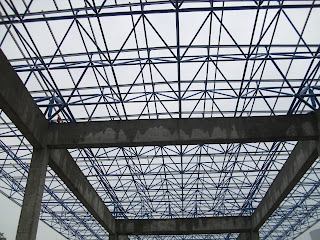In the design of steel structure, how to set the length and slenderness ratio reasonably
In the design of steel structures, setting the length and slenderness ratio of structural members is crucial for ensuring stability and preventing buckling. The length and slenderness ratio considerations vary based on the type of structural member (columns, beams, etc.) and the specific design codes or standards being followed. Here are some general guidelines:
Columns:
For columns, the slenderness ratio (L/r) is a critical parameter. It is the ratio of the effective length (L) to the radius of gyration (r) of the cross-section.
The effective length depends on the end conditions of the column. Common end conditions include pinned ends, fixed ends, and free ends.
Different design codes provide formulas or charts to determine the allowable slenderness ratio based on factors like the material properties and the column's end conditions.
Increasing the section size or using higher-strength materials can reduce the slenderness ratio and improve stability.
Beams:
For beams, the slenderness ratio may not be as critical as for columns. However, lateral-torsional buckling is a consideration.
The length of the beam and its lateral-torsional buckling resistance depends on factors such as loading conditions, support conditions, and the flexural and torsional stiffness of the beam.
Design codes provide criteria and equations to assess the lateral-torsional buckling capacity, and the designer must ensure that the actual applied loads do not lead to failure.
Bracing:
Adequate bracing is essential for preventing lateral-torsional buckling in beams and overall stability in frames.
Bracing systems should be designed to provide lateral and torsional stability to structural members, especially those with higher slenderness ratios.
It's important to note that the specific design approach may vary depending on the structural analysis method used (e.g., elastic, plastic) and the structural system being considered. Consulting with a structural engineer and adhering to local building codes is essential to ensure the safety and compliance of the steel structure.




评论
发表评论